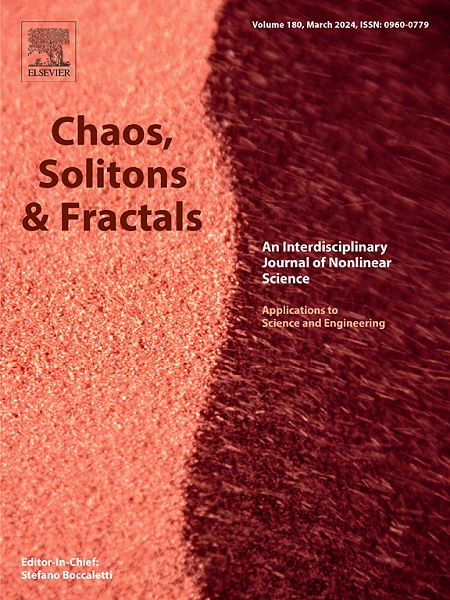Dark matter-wave bound soliton molecules and modulation stability for spin-1 Gross–Pitaevskii equations in Bose–Einstein condensates
IF 5.3
1区 数学
Q1 MATHEMATICS, INTERDISCIPLINARY APPLICATIONS
引用次数: 0
Abstract
The non-autonomous dark soliton solutions of the spin-1 Gross–Pitaevskii equations with a parabola external potential are considered. The spin-1 Gross–Pitaevskii equations are transformed into the constant-coefficient (autonomous) three-component Gross–Pitaevskii (3-GP) equations by using the similarity transformation method, the dark soliton solutions of the autonomous 3-GP equations are generated by using the Hirota’s bilinear method. Then we investigate the modulation stability (MS) of the autonomous 3-GP equations and find the relation between and . The regions of MS and modulation instability (MI) are distinguished, and the stable solitons from the MS region are derived by selecting specific parameters. Since the bright soliton solutions of the spin-1 Gross–Pitaevskii equations have been described in detail in the other literatures, here we focus on the dark soliton solutions. We obtain non-autonomous dark one-soliton, dark two-soliton and some novel forms of dark soliton solutions, such as “-typed”, “-typed”, “-typed” and “-typed” wave solutions and some soliton interactions of the spin-1 Gross–Pitaevskii equations. Some special dynamic behaviors of dark solitons of the spin-1 Gross–Pitaevskii equations with an external potential are obtained via selecting some free functions. These obtained non-autonomous dark soliton solutions can give some potential applications in Bose–Einstein condensates (BECs).
求助全文
约1分钟内获得全文
求助全文
来源期刊

Chaos Solitons & Fractals
物理-数学跨学科应用
CiteScore
13.20
自引率
10.30%
发文量
1087
审稿时长
9 months
期刊介绍:
Chaos, Solitons & Fractals strives to establish itself as a premier journal in the interdisciplinary realm of Nonlinear Science, Non-equilibrium, and Complex Phenomena. It welcomes submissions covering a broad spectrum of topics within this field, including dynamics, non-equilibrium processes in physics, chemistry, and geophysics, complex matter and networks, mathematical models, computational biology, applications to quantum and mesoscopic phenomena, fluctuations and random processes, self-organization, and social phenomena.
 求助内容:
求助内容: 应助结果提醒方式:
应助结果提醒方式:


